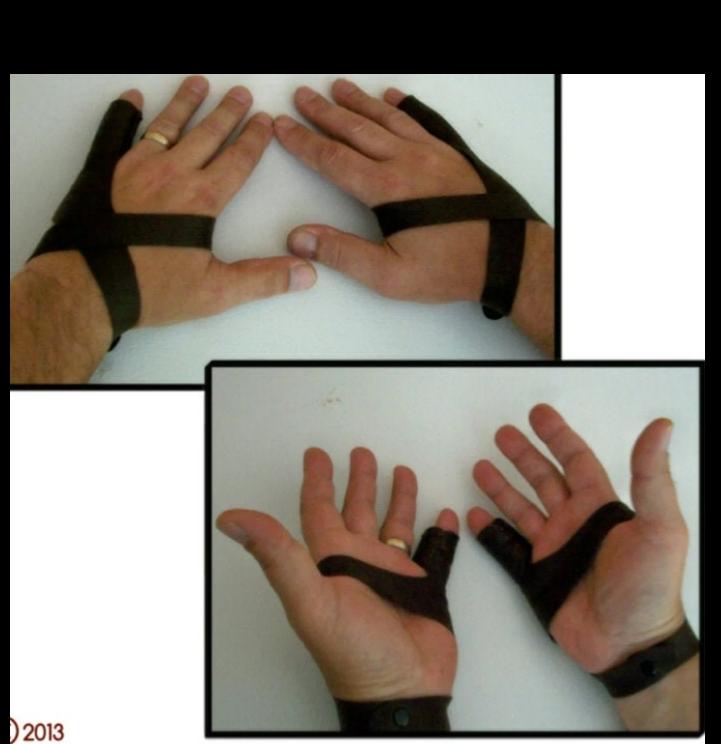-
Posts
1,291 -
Joined
Content Type
Profiles
Forums
Events
Blogs
Gallery
Everything posted by SUP
-
I guess the difference is between working on live skin and dead skin. 😄
-
I think that this tool can be used along with hand tooling for best results. Used by itself, looking at the results on the listing in Weaver, the results look rather flat. Reminds me of the tooling on the leathers sold to tourists in some South American countries and elsewhere. Of course, I am only looking at photographs which is why I asked the question that I did, above.
-
That's nice. For those who cannot master4 hand tooling or have arthritis, for example and can no longer tool by hand, it should be a boon. How do the tattooled pieces compare to hand tooled pieces? I know the effort is less but the results, are they as satisfactory?
-
The Tattool machine from Weaver Leather supply. Has anyone tried it? Opinions? Thoughts? There is always space for innovation, isn't it?
-
I bought a kit, it cost me about $120.00 from Amazon and a utility knife. I first made knife sheaths, Every knife at home has a sheath from my first attempts. This gave me an idea of how to cut leather, how to punch it to make stitching holes and how to sew leather. Then decided what I wanted to do next. Learning leatherwork is a step-by-step process, like everything else. You can make bigger, more complicated items, but the quality might not be as you would like because you might not have sufficient practice or knowledge to do it well. My two cents' worth. A bit late in the conversation though. 🙂 I drew the shape of the knife blades on paper, traced that onto leather, added a border for the sewing and jumped right in. it worked.
-
Happy New Year, everybody!
-
These work for me. I had to make them with very thin leather though. Else bending the pinkie as one stitches can cause discomfort. I keep it in position with Velcro. Very little stitching required. The pattern, if you plan to purchase, is $3.75 at this point, on Etsy. \https://www.etsy.com/listing/177991649/pattern-leather-stitching-glovelettes?ls=s&ga_order=most_relevant&ga_search_type=all&ga_view_type=gallery&ga_search_query=leather+gloves+pattern&ref=sr_gallery-1-18&sr_prefetch=1&pf_from=search&pro=1&sts=1&dd=1&content_source=26ef2132-bc4e-4635-9661-a74388428a26%3ALT6f7c3042b01201a47c9bd6f7e052a3bda7b44709&organic_search_click=1&logging_key=26ef2132-bc4e-4635-9661-a74388428a26%3ALT6f7c3042b01201a47c9bd6f7e052a3bda7b44709
-
The edge glider that is available on Etsy works on thin leather. it is expensive though. I got a prototype, which was less expensive.
-
Neatsfoot oil before the vinegaroon gives a matte deep black color. It can be used after as well and sometimes turns grey vinegaroon dyed leather black. . If the leather goes grey, it is either because there is insufficient iron acetate or because more tannins are needed. This is what I do. In case of the former, add some more steel wool to the vinegaroon and keep aside a day or two and try again or make a fresh batch of vinegaroon. If the latter, dip in strong black tea for a few minutes and rinse well to get rid of all the loose tea and then try with vinegaroon. In all cases, I rinse the dyed leather well after the vinegaroon and then allow it to dry. The neatsfoot oil first, prevents it from going stiff. The water rinse removes extra vinegaroon which can leave a vinegary smell. The water also balances the pH. All my Vinegaroon dyed pieces are a deep black and not dry or stiff.
-

Pirarucu or Arapaima or Amazon bass
SUP replied to SUP's topic in Exotics, Reptiles, Furs and others
I have discovered that the conditioner from Chemical Guys and Resolene works. I apply the conditioner, including under the scale areas. I allow it to dry for 4-5 hours. Then I apply a layer of Resolene in the same way and allow it to dry for a day. A thin layer of Resolene though. The result is a leather that glows softly and is less vulnerable to damage. Hope this information helps anyone else who is working on Pirarucu. If anyone else has better ideas, do share. -
Search for 'casing solution'. on this site. You will find many recipes as well as guidance on how best to use them to get the best results.
-
The best possible reason to get a tattoo. 🙂
-
Yes. I always learn some new technique with his designs. His videos are excellent.
-
That is pretty. I like the details like the difference in the shape of the edges in the area of the cabochon.
-
I do not eve have linseed oil at home. Ever since I heard that rags used to apply it can ignite spontaneously if stored carelessly, I prefer to avoid it. The water based, non-darkening conditioners, yes. In a few months time, when I have the time I might possibly do that. I use them anyway, so might as well check their efficacy. Again, if I am able to do so.
-
Yes, two years now and my leathers are all fine. I will give a final report in a couple of months - no time now - and then do a yearly report, if anything changes. Thank you @fredk for all of your input. I believe that we have contributed a little bit to understanding the effects of different oils on veg tanned leather.
-
Your designs are unusual and memorable. One does not forget them. :-)



